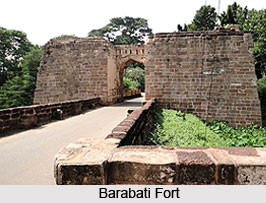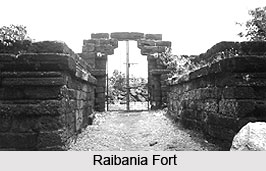 Forts in Odisha are significant monuments of the country which stand as the witnesses of important events of Indian history. Elegant and impressive architecture structures these forts. Built in ancient times by various rulers, these forts previously served as the defence from invasions and foreign attacks. Several parts of these forts have been demolished over time leaving behind their relics. Archaeological Survey of India has carried out extensive researches on these forts to reveal various hidden and significant facts associated with them. Presently forts in Odisha form some of the most inviting tourist destinations of India.
Forts in Odisha are significant monuments of the country which stand as the witnesses of important events of Indian history. Elegant and impressive architecture structures these forts. Built in ancient times by various rulers, these forts previously served as the defence from invasions and foreign attacks. Several parts of these forts have been demolished over time leaving behind their relics. Archaeological Survey of India has carried out extensive researches on these forts to reveal various hidden and significant facts associated with them. Presently forts in Odisha form some of the most inviting tourist destinations of India.
Barabati Fort
Barabati Fort, situated in Cuttack district of Odisha, was constructed by Ganga dynasty in 14th century. Presently the fort is in ruins and the leftovers include earthen mound of the nine-storied palace, a gate and its moat which narrates the events of the past. The fort has been the witness of various historical battles. Archaeological excavations have been carried out in the fort to unearth the historical facts associated with the fort.
Chudanga Gada
Chudanga Gada, located in the village Baranga of Cuttack tehsil and district, was formerly recognized as Sarangagarh. The fort was built by Lalatendu Kesari belonging to the Kesari dynasty, also known as Somavamsis, in 12th century A.D. It was named as Sarangagarh as the area had several water bodies filled with lotus which is referred as Saranga in Sanskrit. It has been declared as a protected monument by Archaeological Survey of India.
 Raibania Fort
Raibania Fort
Raibania Fort comprises a group of forts located in Baleswar district in Odisha. In eastern India, it is regarded as the biggest medieval fort. It was structured during the Buddhist period in India. The fort complex houses 161 fort goddesses. It was built by Langula Narasinha Deba, the ruler of Ganga dynasty of Utkala, after defeating Humayun Khan which restricted the entry of Mughals in Odisha.
Sisupalgarh
Sisupalgarh, situated in Khurda district, is a ruined fortification and is a nationally protected monument. It is considered amongst the best preserved and largest early historic fortification in the country. Archaeological excavations carried out in the fort campus have established the fact that the fort city prospered between 3rd century BC and 4th century AD. Thus it is said that this defensive settlement had been established before the emergence of Mauryan Empire.
Jaugada Fort
Jaugada Fort is another ancient fort located in Berhampur near Bhubaneshwar city of Odisha. In ancient times it served as a provincial Mauryan fortified capital of the province of Kalinga. The fort bears significance in Ashokan studies. It is also famed as the second place in the state where Ashokan rock edicts associated to Kalinga have been found inscribed. Information about the administrative policies of the ruler has also been discovered among these inscriptions.



















